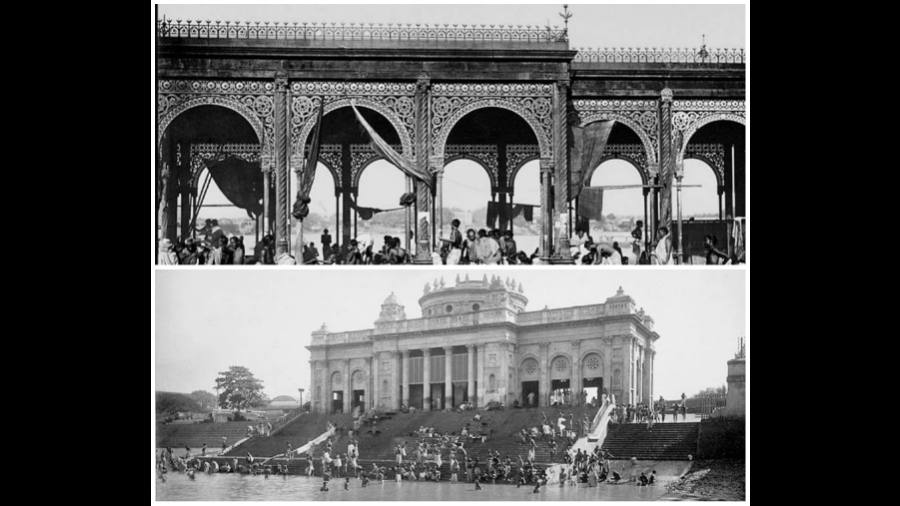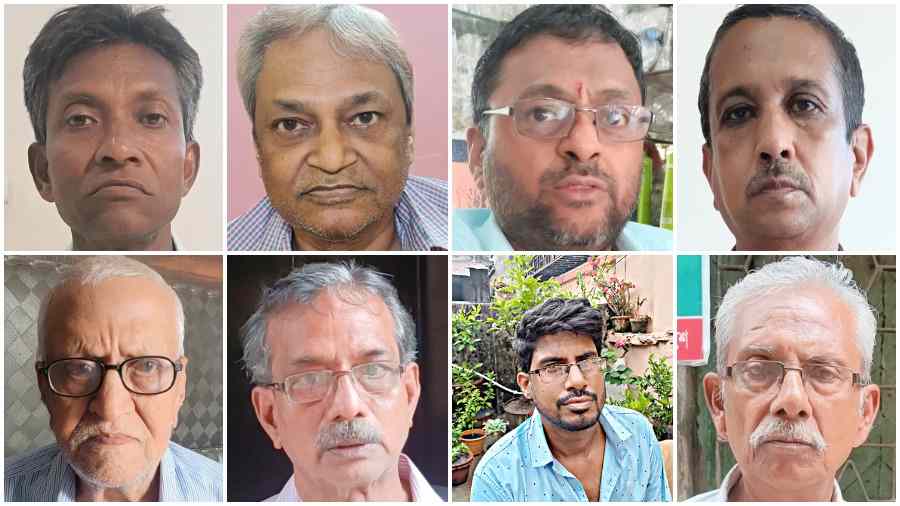Within a month of becoming chief minister of West Bengal in May 2011, Mamata Banerjee had announced her wish to beautify the Hooghly riverfront along the lines of the Thames in London, UK. But in the last 11 years, all redevelopment projects have primarily focused on building promenades and parks on the riverside, neglecting the once splendid and iconic ghats; most of them have been turned into garbage dumps or open toilets.
A ghat refers to the flight of steps or a negotiable slope descending into a river or any water body. Ghats were built for bathing, and prayer, cremations and other religious or spiritual rites, to ease the transport of people and cargo, and even for dumping garbage or night soil. In earlier centuries, the wealthy and the powerful built ghats to earn brownie points in society and also to show off their wealth. A ghat could be functional or elaborately designed with add-on features and usually came with the family name of the patron inscribed.
This July, the Kolkata Metropolitan Development Authority or KMDA, the agency responsible for the city’s planning, claimed it was working on a master plan that involved a major facelift of as many as 15 ghats on the Calcutta side of the Hooghly river. It has initiated a process to engage experts to study the ghats and thereafter plan their revamp or reconstruction.
Just a couple of weeks before the KMDA’s announcement, the Syama Prasad Mookerjee Port Trust (formerly Calcutta Port Trust) also declared its wish to develop an “iconic riverfront complex” complete with a boutique hotel, banquet hall, shopping mall, sports complex, multi-level car parking zone and so on, on an adjoining plot of land at the prime business district and vantage point of the city on Strand Road surrounding the Armenian Ghat.
The Port Trust is the custodian and conservator of the river, including its banks, while the KMDA decides the development along the banks. A third agency, the Kolkata Municipal Corporation (KMC), is in charge of managing approach roads, waste management and approving building plans of houses near the river, including the ghats.
But what is the ground reality of the ghats? Over a fortnight, I undertook several rides on ferries that crisscross the Hooghly every day, carrying thousands of commuters.
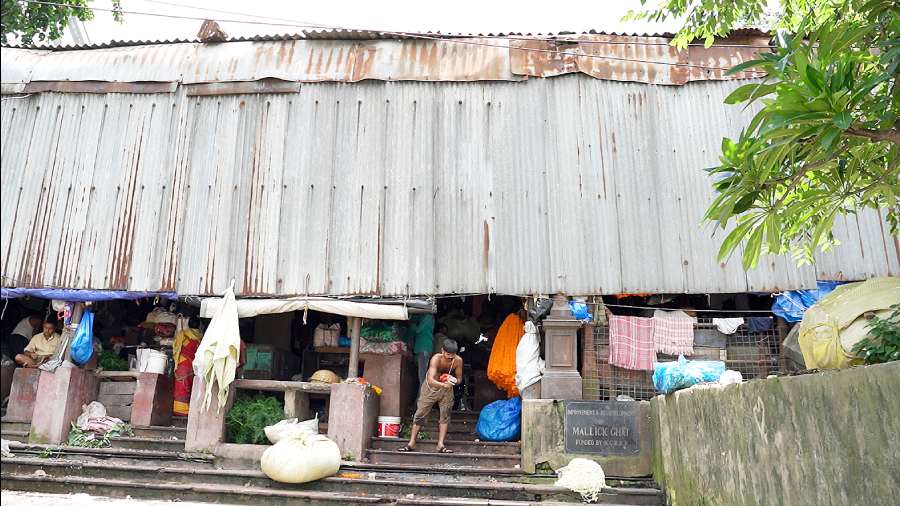
Mallick Ghat (above) now has the cast-iron structure, imported from Glasgow, hidden by corrugated iron sheets while the crowning glory of Chhotulal Ghat (below) was replaced by a new floor that serves as a dharmasala. Courtesy, The Ganges Walk
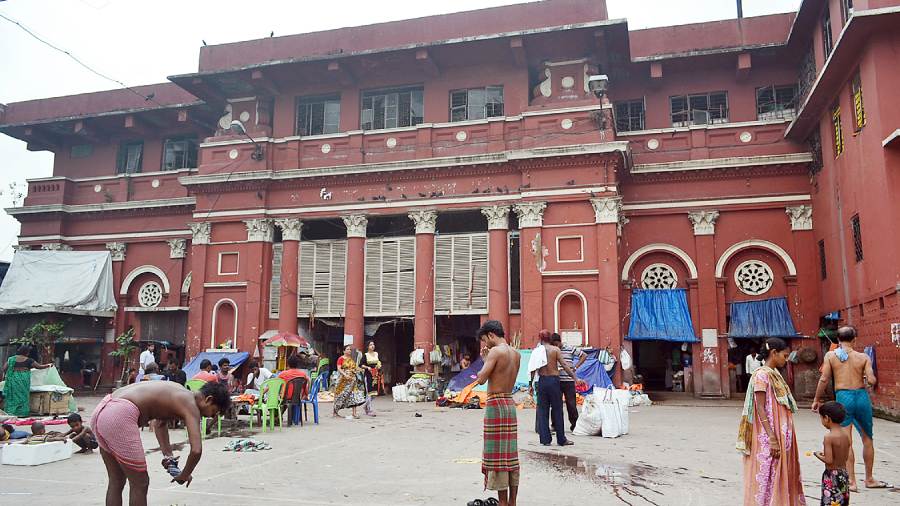
Some three decades ago I would do this very often. I still remember the mostly green shoreline dotted with colonial-style pavilions and exquisite cast-iron structures. Alas, most of that has vanished. Instead, I saw shanties, piles of garbage and unsightly apartment blocks. Some ghats were covered with corrugated iron sheets painted white and blue.
To get a closer look, I decided to walk along the riverfront of the more architecturally significant ghats, most of them in the vicinity of the Howrah Bridge. It is quite difficult to negotiate them, as I discovered. A ramshackle bridge over the circular railway track that runs along the riverside lay in my path. I had to pick my way to the river through a mysterious-looking alley. Beyond it were parked trucks meant to carry goods to the adjoining business hub of Burrabazar, and shacks that were home to porters and other labourers.
I couldn’t find my way to Pathuriaghat, famous for its cast-iron archways with dragon wing designs similar to the entrances of the metro stations in Paris. Instead, I landed up further south, at Jagannath Ghat.
The ghat looked grotesque. The ornate cast-iron structure was covered by an ugly corrugated tin shade, this too painted white and blue. It was apparently the doing of the flower traders who operate in the wholesale flower market adjoining the ghat.
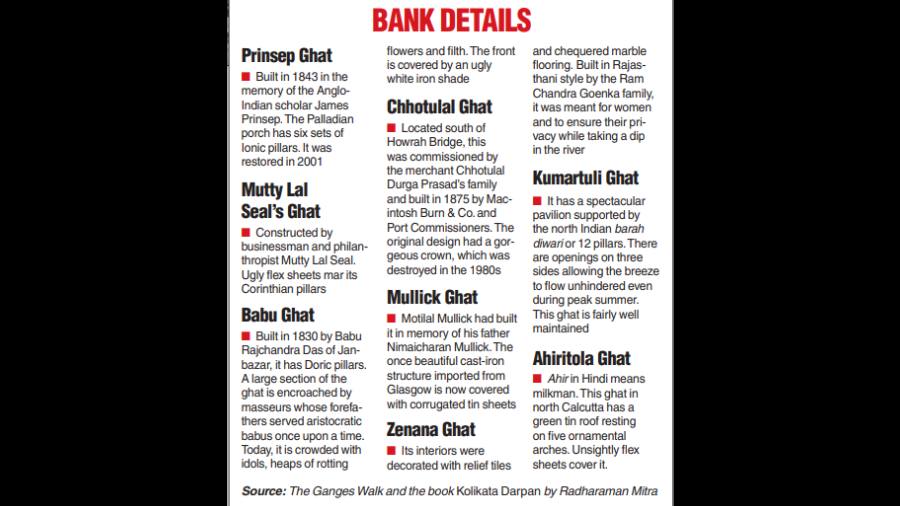
The approach to the ghat — meant for bathers as well as priests and people conducting rituals — lay encroached by traders and their piles of flowers. The flower market stretches for nearly a kilometre, and skirts two other ghats — Mullick Ghat and Zenana Ghat — that lie beneath the eastern approach of the Howrah Bridge. It blocks the entrances to these two ghats as well.
Jagannath Ghat is named after a temple near the ghat; it is dedicated to Lord Jagannath. It was built by Sovaram Bysack, a businessman and philanthropist, in the early 18th century for pilgrims. Years ago, the ghat used to be known as Sovaram Basaker Ghat among the local people. Bysack is the Anglicised spelling of the Bengali surname Basak.
Atreyee Basak is a descendant of Sovaram; she is also a heritage enthusiast and quite taken with Calcutta’s colonial history and grandeur. She, along with her childhood friend Poulomee Auddy, co-founded a heritage walking tour called The Ganges Walk along the architecturally significantghats. Recently, they made a documentary titled The Dying Ghats of Calcutta. Says Atreyee, “We are saddened by thepresent condition of these edifices thatare the flag-bearers of our history andheritage. We feel it is our responsibilityto preserve it in our own way.”
Poulomee adds, “With the passageof time, these splendid structures started losing their glory due to the lack ofconservation and restoration. The oncebeautiful riverbank has now become adump, stinking and filthy.”
While researching for the documentary — it took five years —Atreyee and Poulomee foundmost of the ghats in varying stages ofdecay. When they compared the currentcondition of Chhotulal Ghat — to thesouth of Howrah Bridge — with a 1912photograph of it, which they found inthe collection of the Royal Commissionof Ancient and Historical Monumentsof Scotland (RCAHMS), they were appalled. Says Atreyee, “The original design had a gorgeous crown, but that ornamental rooftop was destroyed to makeroom for a new floor in 1987.” The floor isnow a dharmasala and the whole structure has been painted a deep red.
Mullick Ghat, built in memory of thefamous banker and mint man Nimaicharan Mullick, is now the epicentre ofthe flower market.
Stairway down hell

NEW LENS: Much of the olden beauty of Jagannath Ghat (above) and Ahiritola Ghat (below) has been lost through renovation efforts that include the typical blue-and-white coating Photographs by Prasun Chaudhuri and courtesy The Ganges Walk
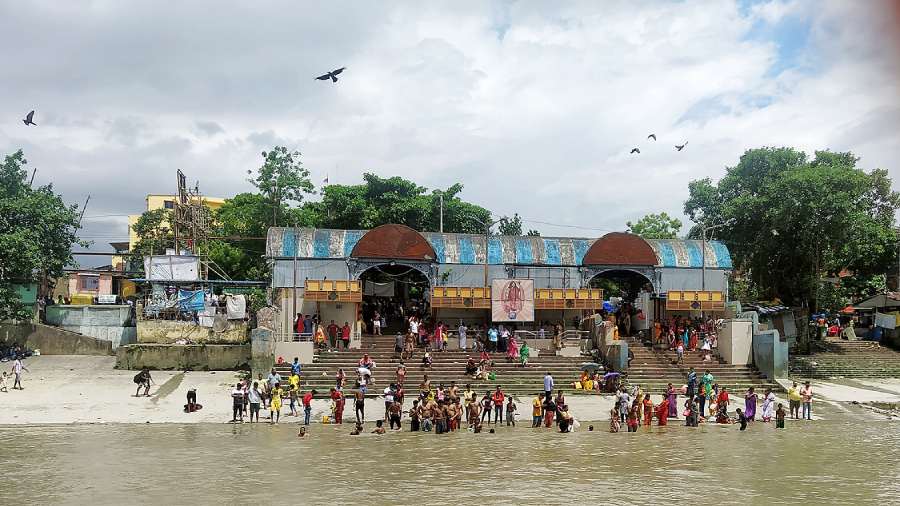
The cast-iron colonnade with arch infill panels imported from Glasgow is now covered with corrugated tin sheets to protect roses, marigolds and gerberas from the scorching sun,” says Atreyee. Just beside this ghat is the Zenana Ghat. It was built for women bathers by philanthropist-businessman Ram Chandra Goenka in the early 1890s. Its elegant dome surrounded by four minarets is now in the grip of undergrowth. The ghat has been abandoned by bathers as there is no clear approach to it. Earlier this year, heritage activists had a hard time preventing a part of it from being leased out to local businessmen as a godown.
“There is a need to restore the ghats that stand witness to our history. It is a pity that sometimes, in the name of restoration, a fresh coat of paint is given or some minor facelift is carried out, and little is done to revive the olden carvings and other artistry,” says Atreyee.
There are two exceptions.
In 1993, the non-profit organisation, Intach, restored Prinsep Ghat in association with some corporate partners and the state public works department. The construction of the second Hooghly bridge and dumping of building materials around the ghat had turned it into a dilapidated structure. Although the river has shifted from the original ghat in the past few decades, the well-maintained Prinsep Ghat is more of an iconic monument than a way to the river.
The elegant colonial structure of Durga Charan Mukherjee Ghat (also known as Maayer Ghat) in north Calcutta’s Bagbazar has also been restored to its old glory by the Hooghly River Bridge Commissioners. In addition to this, the Port Trust had painted Annapurna Ghat, Judges Ghat and Mutty Lal Seal Ghat with the help of some students of the Government College of Art and Craft, Calcutta.
Jawhar Sircar, who is the former culture secretary, Government of India, and Rajya Sabha MP, said in the documentary, “It’s not impossible to bring back the glory of some of these ghats and their architectural masterpieces of cast iron. There are a lot of conservation architects in Calcutta who do good work. We can make a pool of such architects who will decide what is to be done, how it is to be done.”
Talking about the challenges of restoration, Sircar tells me that the process has to begin with synergy between the agencies — the Port Trust, KMDA and KMC — involved in the management of the river and the riverfront. The Port Trust is a central government body, while the other two agencies come under the state government.
“The users of the ghat, especially the flower merchants, must also co-operate during a restoration effort,” Sircar adds.

Atreyee Basak and Poulomee Auddy at Pathuriaghat
The documentary features Gautam Chakraborti, who is honorary heritage advisor of the Port Trust. He tells me about strong hindrances in any kind of restoration effort of the ghats from various local political lobbies. He recalls the time of the refurbishing and painting of Mutty Lal Seal Ghat. He adds, “Some local goons desecrated the painted walls with excreta to prevent our work. We had to call the police.” He laments the lack of social consciousness among the general populace in matters of heritage.
Adds Sircar, “It’s a pity that our culture considers the river’s water holy, yet people don’t hesitate to defecate or throw animal carcasses, rotten flowers and filth into the river or defile the riverfront.” According to him, focus on the aesthetics of the riverfront is more of a European concept and Calcutta had imbibed this as a colonial legacy. He adds, “It’s time to reclaim the heritage of these derelict ghats and pay some real homage to the sacred river.”

